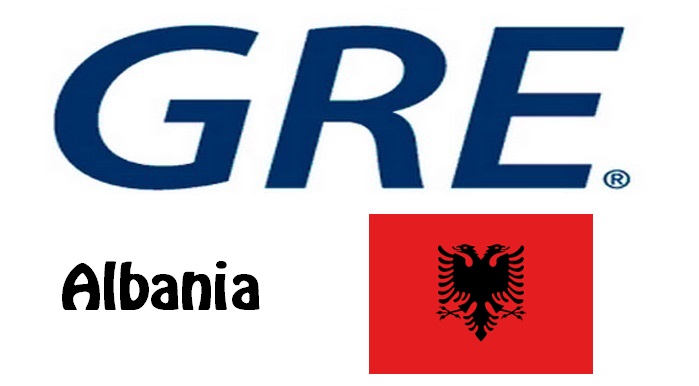GRE Testing Locations
Decided to take GRE exam? Now it is time to determine where to take the test. This site provides a full list of GRE testing centers in Albania, among which, you can choose one that is nearest to you. Good news is that the following GRE test locations in Albania offer both GRE general test and the GRE subject tests.
Paper-delivered Test Centers for General Test
| Code | Name |
| 10527 | Tirana, S.T.A. (Testing Solutions) |
GRE Test Dates
There are two types of test format offered by the test maker – ETS: Computer-delivered and Paper-delivered GRE general tests. For computer based test format, the GRE General Test is offered year-round on a continuous basis, and available for registration on a first-come, first-served basis. For paper based general test, testing is available three times per year. The following test dates apply:
| Test Dates for Paper Based | Deadlines for Registration | Scores Available |
|---|---|---|
| November 09, 2019 | October 4, 2019 | December 20, 2019 |
| February 1, 2020 | December 27, 2019 | March 13, 2020 |
GRE Subject Tests in Albania
The GRE Subject Tests are available on paper based only. In all GRE test centers throughout the world (both inside and outside United States), the exam is available three times a year. The three test dates are:
- April
- September
- October

More about Albania
Politics
The constitution of November 28, 1998 (approved by referendum on November 22, 1998, amended several times) defines Albania as a parliamentary republic with a multi-party system and guarantees separation of powers, fundamental and human rights. The head of state and commander-in-chief of the armed forces is the president, who is elected by parliament by secret ballot with a three-fifths majority for five years (re-election possible once). The legislature rests with the Assembly of Albania (Kuvendi i Shqipërisë), whose 140 members are elected for a term of four years. The government chaired by the Prime Minister is appointed by the President and has to be approved by Parliament. The Constitutional Court, which was established in 1992 and whose nine judges are appointed by the President with the consent of Parliament, is responsible for reviewing norms.
National symbols
The red, rectangular national flag shows the black double-headed eagle of the coat of arms in the middle of the flag.
In the course of its history, Albania has had various coats of arms, but the eagle has always been the focus. This goes back to the heraldic animal of the national hero Georg Kastriota, called Skanderbeg (first evidence: seal of June 7, 1450) and was introduced with the Albanian declaration of independence (1912). In the coat of arms introduced on July 31, 2002, the helmet in the shield hovers over the eagle. The helmet also symbolizes the national hero Skanderbeg and is intended as a reminder that there was an independent state of Albania before.
The national holiday on November 28th commemorates the gaining of independence in 1912 and November 29th the end of the German occupation in 1944.
Parties
Important parties are the Socialist Party of Albania (PSSh; successor organization founded in 1991 to the Communist Labor Party of Albania [PAA]), the Democratic Party of Albania (PDSh; founded in 1990), the Socialist Integration Movement (LSI; emerged as a split from the PSSh in 2004), the Republican Party of Albania (PRSh; founded in 1991), the Party for Justice, Integration and Unity (PDIU; created through party merger in 2011), the Union for Human Rights Party (PBDNJ; founded in 1992) and the Christian Democratic Party of Albania (PKD; founded in 2002).
Law
After the end of socialism, a comprehensive judicial reform was carried out. The core of the new court system is a three-tier ordinary jurisdiction. At the top is the Supreme Court, alongside the Constitutional Court, in particular for constitutional interpretation and judicial review. The members of both courts of justice are appointed by the President, with the consent of Parliament, for one-off terms of nine years. The two lower levels of jurisdiction consist of district and appeal courts. A special court has been created to combat serious crime. The judges are independent. The public prosecutor’s office is organized centrally. A new legal system was also created, which was drawn up with the participation of international consultants. This should meet the requirements of a market economy. At the moment, however, their practical implementation is not yet satisfactory in all areas.
Administration
Albania is administratively divided into 12 prefectures (qark) and subsequently into 61 municipalities (bashki), 72 cities and around 3,000 villages. The prefects are appointed by the Council of Ministers.
Administrative division in Albania
| Administrative structure (2018) | |||
| Prefecture (capital) 1) | Area (in km 2) | Population | Residents (per km2) |
| Advises | 1,798 | 127 400 | 71 |
| Dibër (Peshkopi) | 2 586 | 121,000 | 47 |
| Durres | 766 | 289 600 | 378 |
| Elbasan | 3 199 | 278 500 | 87 |
| Fier | 1,890 | 298 100 | 158 |
| Gjirokastër | 2,884 | 63,000 | 22nd |
| Korçë | 3 711 | 210 200 | 57 |
| Kukës | 2,374 | 77 400 | 33 |
| Lezhë | 1,620 | 126 800 | 78 |
| Shkodër | 3,562 | 205,000 | 58 |
| Tirana | 1 652 | 884,000 | 535 |
| Vlorë | 2 706 | 189 300 | 70 |
| 1) The prefecture and capital names are the same unless otherwise specified. | |||

